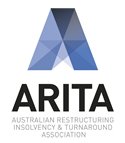NEWS REPORT FROM The Australian ON MORNING OF 5 SEPTEMBER 2016 ……………………………………………..
Clive Palmer faces Federal Court grilling over Queensland Nickel collapse
By Sarah Elks, Queensland political reporter, The Australian, September 5, 2016, 10:29AM.
Clive Palmer demanded weekly cash flow statements for Queensland Nickel (QN) be delivered to him in hard copy because he was “concerned about espionage”.
Former chief financial officer Daren Wolfe has told the Federal Court public examination into the collapse of the Townsville company that Mr Palmer had an “active interest” in the business during 2015, before it fell into voluntary administration in January.
Mr Palmer is alleged to have acted as a shadow director, a claim he denies.
Mr Wolfe told the court weekly and monthly financial documents were prepared about the health of the company. He said Mr Palmer asked for the data in hard copy, not via email. Asked why, by Tom Sullivan QC for special purpose liquidators PPB Advisory, Mr Wolfe said: “He had concerns about espionage”.
Mr Wolfe said Mr Palmer was required to sign off on any expenditure for Queensland Nickel over $10,000 — even when he was not a director of the company.
When Mr Palmer entered politics as an MP in 2013, Mr Palmer described himself as a fulltime politician and retired from business.
When QN collapsed, Mr Palmer said he was not involved in the day-to-day running of the business. However, the Federal Court has heard there was a practice within QN for Mr Palmer to have final say on expenditure even when he was not formally a director.
Palmer fronts court
After two failed attempts to avoid being publicly interrogated over the collapse of his Queensland Nickel company, self-proclaimed billionaire Clive Palmer must front court today over the corporate failure.
The resources tycoon, QN’s former chief financial officer Daren Wolfe, and the refinery’s former managing director of operations, Ian Ferguson, have been summoned to appear this morning in the Federal Court in Brisbane to face public examination. In hearings scheduled to last a fortnight, the three will be quizzed about the Townsville company’s downfall, which left creditors up to $300 million out of pocket and almost 800 workers without jobs. The federal government had to step in with $68m to cover the redundancy entitlements of Mr Palmer’s former employees.
Lawyers instructed by special- purpose liquidators PPB Advisory will lead the questioning, which will focus on whether a claim can be launched against QN’s director, Mr Palmer’s nephew Clive Mensink, and Mr Palmer as alleged shadow director, for insolvent trading.
The special-purpose liquidators have also been told to investigate QN’s historical affairs and possible claims against its parent companies, QNI Metals and QNI Resources, both ultimately controlled by Mr Palmer.
Mr Palmer denies he acted as a shadow director and both men deny any wrongdoing.
Mr Mensink is overseas and has not yet been served with a summons.
Mr Palmer could also be interrogated about his personal assets, such as property, as liquidators seek funds that might be distributed to creditors.
Under the Corporations Act, examinees are entitled to claim privilege against self-incrimination before each answer. That does not shield the witnesses from answering a question, but prevents their answers being used against them as evidence in future criminal or civil proceedings, apart from perjury. The Australian understands the strategy is used commonly by witnesses in public examinations, particularly directors or former directors of failed companies.
Mr Palmer did not respond to questions from The Australian yesterday.
The former federal MP for Fairfax, who stood down before this year’s election, twice tried and failed to avoid the public examination. Both attempts were dismissed by Federal Court judges, who said the hearings were in the public interest.
…………………………………….. END OF NEWS ITEM






